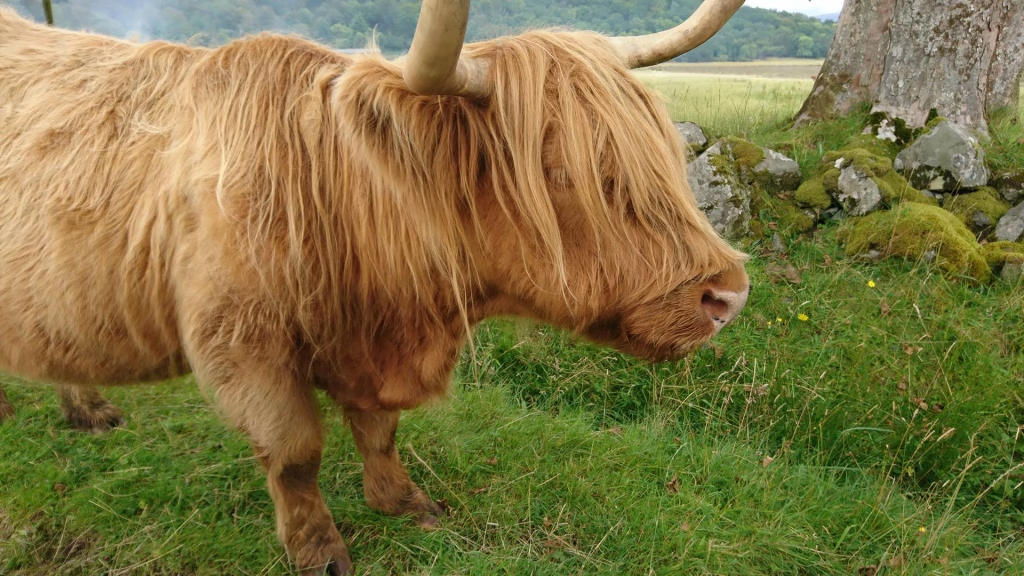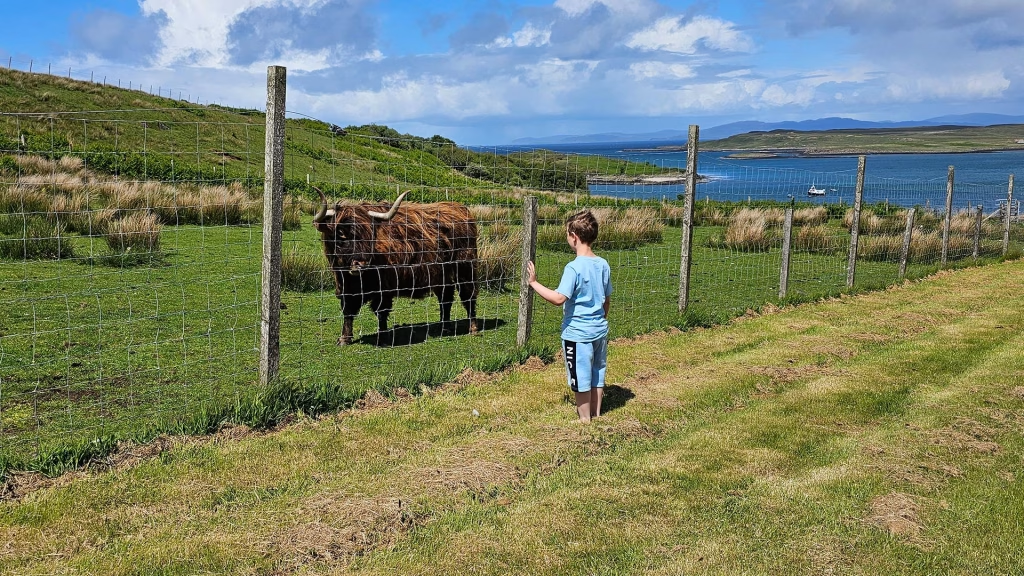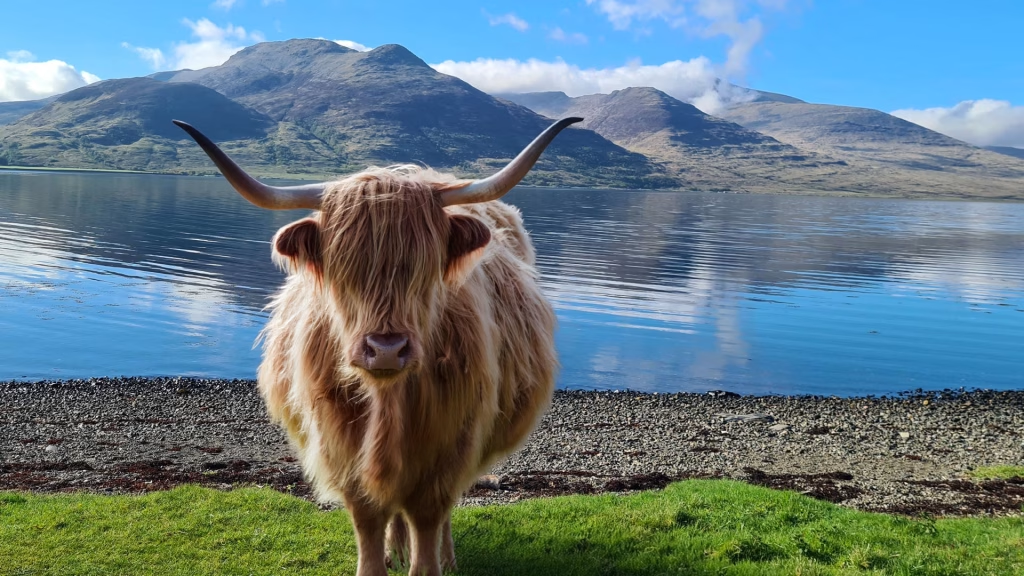Highland cows, or hairy coos, are a defining feature of Scotland’s rural landscape — especially on the Isle of Mull. Below are answers to the most commonly searched questions about these iconic animals.
What is so special about a Highland cow?
Highland cows are instantly recognisable thanks to their long, shaggy coats and sweeping horns. But their uniqueness goes beyond appearance. They are one of the oldest registered cattle breeds in the world, known for their hardiness, gentle temperament, and ability to thrive on rough terrain. Their meat is lean and flavourful, and they play an important role in maintaining biodiversity through sustainable grazing.

Why are Highland cows only in Scotland?
While Highland cattle originated in Scotland and remain closely associated with the Highlands and Western Isles, they are no longer exclusive to the country. Their adaptability has led to global export, and they now live in countries ranging from Canada to Australia. However, their cultural and historical roots are firmly Scottish, and they remain a symbol of the nation’s rural heritage.
Where is the best place to see Highland cows?
The Isle of Mull is one of the best places to see Highland cows in their natural environment. They are commonly spotted near roadsides, open fields, and coastal pastures across the island. Areas around Pennyghael, Gruline, and the Ross of Mull offer reliable sightings. Visitors are advised to respect fences and keep a safe distance, especially during calving season.

What are Highland cows called in Scotland?
In Scotland, Highland cows are affectionately known as “hairy coos.” The term is widely used in local speech and signage, and reflects both their appearance and the Scots dialect. It’s a term of endearment that has become part of the cultural identity of rural Scotland, especially in tourist-facing areas like Mull.
What is the lifespan of a Highland cow?
Highland cows typically live between 15 and 20 years, with some individuals reaching over 25 years in low-stress environments. Their longevity is partly due to their robust health and low susceptibility to disease. On Mull, where they are often raised in extensive systems, they benefit from natural grazing and minimal intervention.
Can you pet a Highland cow?
Petting Highland cows is not recommended unless you are on a farm where the animals are accustomed to human contact. While they are generally docile, they are still large animals with unpredictable reactions. On Mull, most hairy coos are semi-feral and not used to close interaction. Visitors should admire them from a distance and avoid crossing fences or approaching calves.
Can Highland cows get aggressive?
Highland cows are known for their calm nature, but like any animal, they can become defensive if threatened. Aggression is rare and usually limited to protective behaviour, especially from mothers with young calves. On Mull, farmers report that they are among the easiest breeds to manage, but caution is always advised when encountering livestock in open areas.
How much is a Highland cow?
The price of a Highland cow varies depending on age, pedigree, and breeding status. As of 2025, calves may sell for £300 to £600, while mature breeding cows can range from £1,000 to £2,500 or more. Prices fluctuate based on market demand and whether the animals are registered with breed societies. Mull farms occasionally sell stock, but most are kept for local grazing.

Are Highland cows tasty?
Highland beef is prized for its flavour, tenderness, and low fat content. The slow-growing nature of the breed results in well-marbled meat with a distinctive taste. It is often sold as a premium product in farm shops and restaurants across Scotland. On Mull, some farms offer locally raised Highland beef, contributing to the island’s reputation for quality produce.
Are Highland cows intelligent?
Highland cows show a level of intelligence that suits their environment and lifestyle. They are highly adaptable, capable of navigating rough terrain, and can remember grazing routes and shelter locations over long periods. Farmers often note their ability to recognise routines, such as feeding times or gate movements. While not trained like dogs or horses, they demonstrate problem-solving instincts and social awareness within the herd. Their calm nature and memory make them easier to manage than more reactive breeds, especially in extensive systems like those found on the Isle of Mull.
